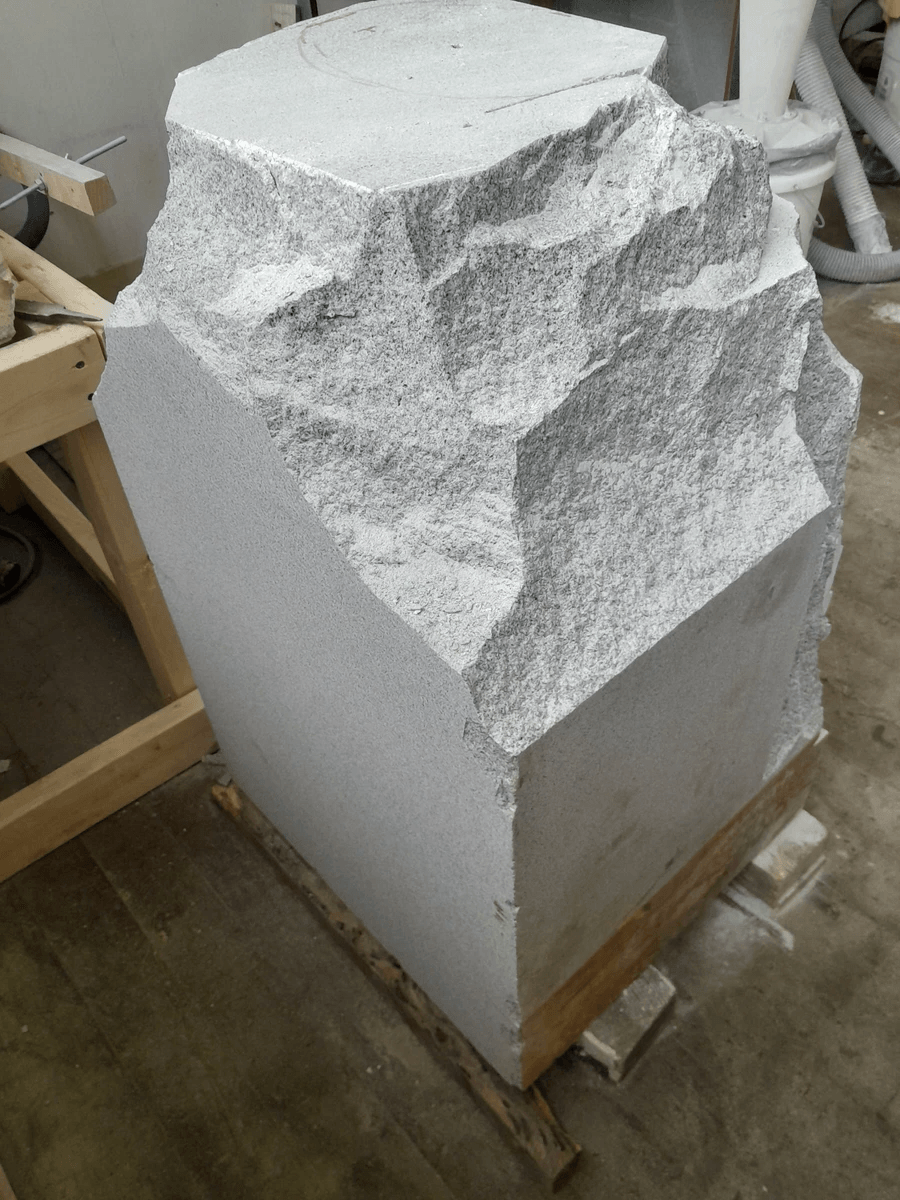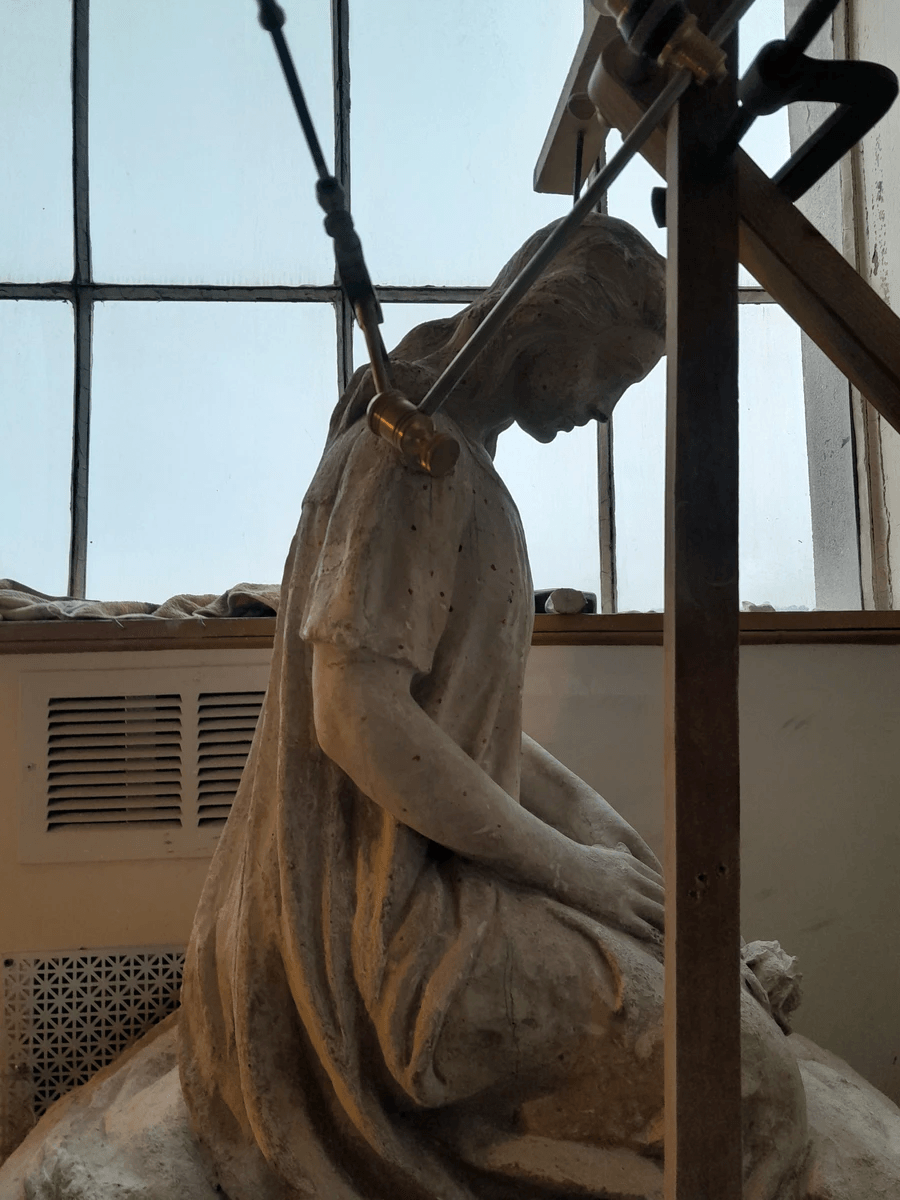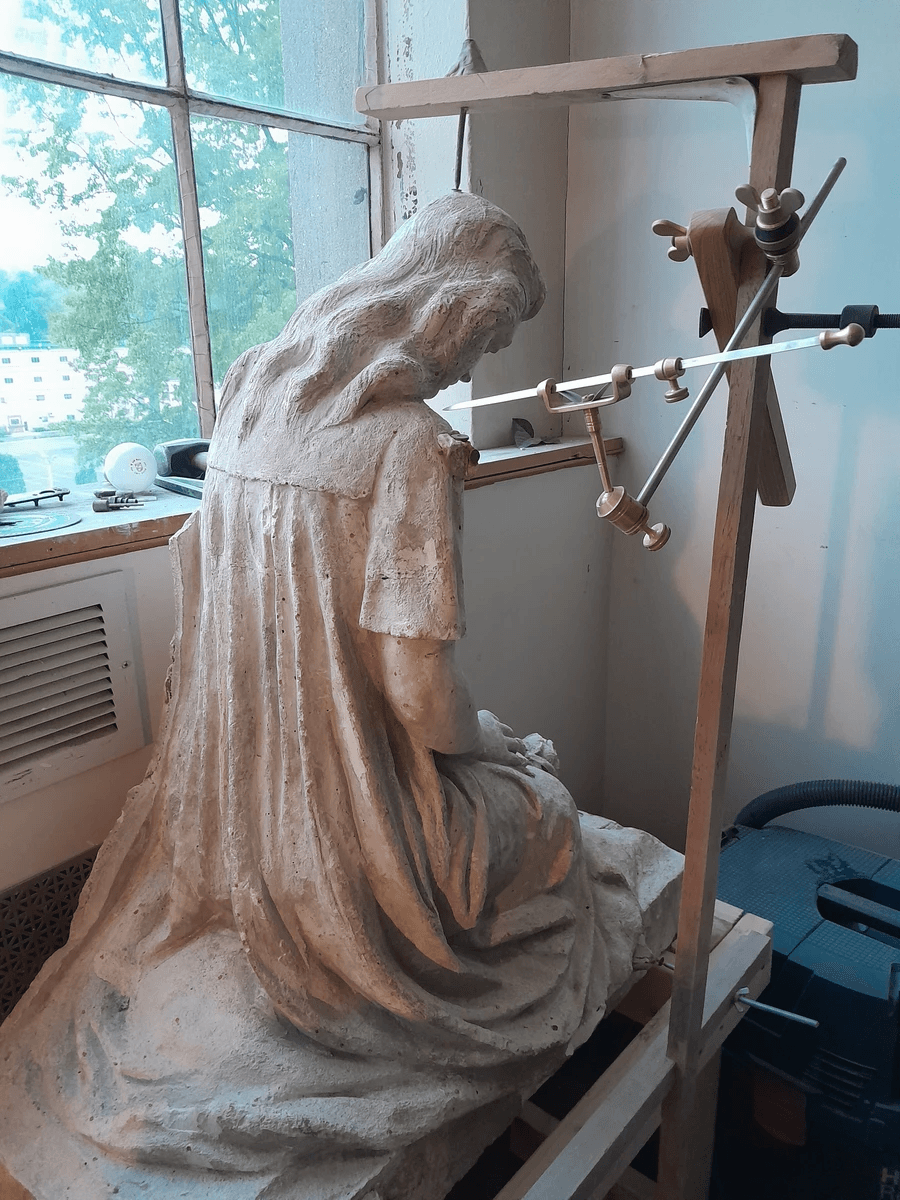Welcome to the first installment of the Michael Angelicola Stone Carving blog! Here, I hope to reveal a bit more about the process of carving a monument to give our customers a better sense of the true scope of craftsmanship and effort that goes into each piece. Over the coming months, I will document how a sculpted monument is made using an example currently in my workshop.
First, I source my granite and receive a raw, granite block. I use high-quality, monument-grade granite to ensure that each piece stands the test of time. I begin by chiseling out a general shape to begin.

At the same time, I employ a plaster model to guide me in recreating the sculpted piece. For this monument, I use a plaster model of a sculpted angel that was made circa 1900 in Barre, VT and is currently owned by a granite sculptor in Barre who loaned it to me to take back to Connecticut to copy in granite.
It is an exciting project and I look forward to transforming what is starting out as a block of granite into an accurate copy of such a beautiful figure with so much history behind it. What makes it even more special is this is the first piece I worked on when I went to Barre, VT to be trained by a notable sculptor.
The depth of the details are transferred from the model to the block of granite by use of the device in the picture, most often called a pointing machine, among other names. Its purpose is to measure depth of a particular location on the model and you will then know how deep to carve the granite in the same location on the granite.


It is a slow but rewarding process and I look forward to sharing her progress over the next several months.
